We asked several vendors a series of six questions related the federal government’s recent announcement on the latest proposed meaningful use definitions and EHR certification criteria.
Was there enough emphasis on clinical decision support and interoperability?
Allscripts – Glen Tullman, CEO
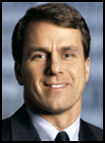
Yes and no. While we’re grateful that HHS responded to our request that they push the industry forward with tougher requirements around Clinical Decision Support and interoperability, we would have preferred a much more aggressive approach on both fronts. If not for this year, then HHS should have made it clearer that in 2013 the bar will be substantially higher so we can begin to plan and develop necessary changes to our applications today. The American taxpayer is investing billions of dollars in this program and they deserve much more rapid progress on Clinical Decision Support (which translates into improved quality) and interoperability (which leads to better quality and lower costs). For instance, HHS could require vendors to support more of the IHE profiles that the vendor community consistently demonstrates are valuable, tested methods of sharing health data in a standard way.
Allscripts has devoted considerable resources to interoperability over the years, as demonstrated by our repeated participation in the HIMSS interoperability showcase and other similar events. Through our leadership, we’ve helped to create an infrastructure of collaboration and connectivity, and we invite some of the other vendors who have not taken part in this effort to join us.
Concerning interoperability, there are a few things we would like to see adjusted in the final rules. We would like to see additional clarity around medication allergies, as well as a stricter approach to problem lists (by allowing only SNOMED CT and not ICD-9). We expect that both of these limitations will be addressed by the time the 2013 certification requirements are released. For the Stimulus incentives to have their intended effect, it’s critical to establish true interoperability of Electronic Health Records.
On Clinical Decision Support, we are excited to be part of initiatives that will push CDS and quality measures into the interoperability conversation. We have actively participated with the National Quality Forum, the National Committee for Quality Assurance, the American Medical Association, HL7 and the HIMSS EHR Association in the creation of a new HL7 standard for the expression of Quality Measures. The new Health Quality Measures Format (HQMF) that these groups have jointly developed will make quality measures interoperable. Right now hundreds of EHR vendors are reading 90 quality measures and trying to extract the logic of those measures from pdf documents. This is an enormous, clumsy and unnecessary effort. With the adoption of HQMF (which we hope will be part of the 2013 certification requirements) our Electronic Health Records will be able to “consume” quality measures automatically, enabling Clinical Decision Support without the “hand coding” that is so often required today. This will significantly enhance our ability to quickly respond to changes in clinical guidelines, and ensure that our clients receive the latest information to guide their delivery of the best possible patient care.
eClinical Works – Girish Kumar Navani, CEO and co-founder

There was not enough emphasis on clinical decision support or interoperability. Many are nervous because intuitive clinical decision support is difficult to develop; however, it serves as the basis for a good prevention-oriented EMR. We would have liked to see more focus in this area and raise the bar for clinical decision support as a requirement for EMR use.
Eclipsys – Philip M. Pead, President and CEO
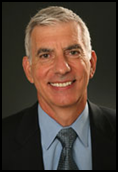
We consider the threshold for Clinical Decision Support (CDS) is clearly a token gesture in Stage 1, and will require a much better definition of what does and does not qualify as CDS before this criteria can become measureable.
What’s important to note is that the landmark Institute of Medicine report, “To Err is Human” was published approximately 10 years ago, calling for expanded use of CPOE to reduce avoidable medical errors and deaths. We believe the passage of ARRA is an unprecedented opportunity to move forward the quality and safety of care for all of us. We agree a one size fits all solution for CPOE isn’t the right approach and we believe the initial ARRA definition timeline gave physicians and hospitals ample time to appropriately customize their adoption of clinical decision support tools. As healthcare leaders we know meaningful CPOE adoption is achievable and we don’t understand what would merit any delay in implementing a technology that prevents human errors and has been proven to reduce costs, injuries and deaths.
e-MDs – Michael Stearns, President and CEO
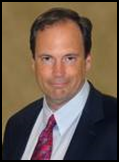
We have for many years viewed decision support as a key added value associated with HIT adoption. We currently offer warnings related to drug-drug interactions and allergy-checking, drug-disease contraindications and formulary support in our e-prescribing module. These features, in addition to the use of health reminders and the five clinical decision support rules relevant to the quality measures is in our opinion sufficient for Stage 1 meaningful use. Regarding interoperability, in the future we would like to see a little more emphasis on data integrity in HIEs. We fully support the need for information to be stored as machine processable structured data. However, given current standards and methodologies, we have concerns over how this information can be safely shared in information systems without an independent validation process in place.
GE Healthcare – Vishal Wanchoo, President and CEO, GE Healthcare IT
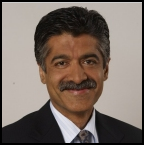
There was strong emphasis on clinical decision support. It’s no secret that we have advocated for a robust level of interoperability as part of “meaningful use” and standards and certification. As a company and an industry, we have been focused on adopting harmonized interoperability standards in a logical stepwise progression.
Since we saw the initial meaningful use proposal, our concerns have remained centered on the underemphasis of standards, interoperability and health information exchange in the meaningful use criteria. On initial review, we’ve noted the companion standards and certification criteria rules contain a scaled-back set of standards for interoperability and security.
InteGreat, a MED3OOO Company – Tom Skelton, President
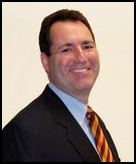
We believe so. Decision support can take many forms, and most products today have some degree of this functionality included. The real question is how the physician interfaces with this functionality. Our clients have told us that numerous pop-ups flying in the physician’s face is not only annoying but can lead to a complete disregard to alerts that appear. Too many alerts can result in a critical alert being missed resulting in a patient care incident. If meaningful use includes a tracking of physician use of this functionality, we need to ensure that it is balanced so as not to make excessive use of a good thing. Given the lack of standardized coding for the majority of clinical elements, the hurdles for higher levels of decision support and/or interoperability are difficult to achieve. As such, the next step before requiring greater decision support or interoperability is a mandate for the use of a standardized nomenclature.
McKesson – Dave Henriksen, SVP and GM, Physician Practice Solutions
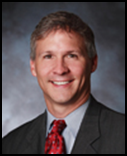
The decision support requirements increased significantly between the HIT Policy Committee’s summer recommendations and the December proposed and interim final rules. The original recommendation was to implement at least one decision support rule, but now the requirement calls for five rules. So that certainly is a much greater emphasis on decision support as “a critical aspect of improving quality, safety, and efficiency.” Some of the decision support requirements will be challenging for providers and vendors alike and need clarification.
From an interoperability perspective, we will recommend robust requirements. The sharing of clinical summaries (problems, allergies, meds, etc.) is still required for transitions of care as expected. However, the immunization registry and public health agency reporting requirements call for the ability to “perform at least one test” for connectivity. While this lowers the burden on providers/hospitals, vendors must enable their systems to comply whether it’s a single test or daily feeds. This means some health systems and physicians may believe that rudimentary point-to-point connections may be sufficient. However, in the long run a point-to-point method will be difficult to maintain and will not provide the robust network connectivity foundation required to achieve the larger national goals.
NextGen Healthcare – Scott Decker, President

The parameters set by the federal government are in line with what the President originally outlined, and a good start toward achieving the ultimate goals of ARRA. We view health information technology as the means to improvement in our healthcare delivery system, and not the end result. From that perspective, the meaningful use criteria establishes the right foundation for physicians not only to implement technology but then to use it for the delivery of better patient care through timely and accurate access to key health data on individual patients. With the detailed requirements included, the federal government is challenging doctors to create a healthcare delivery system that is more clinically efficient, financially responsible and patient-accessible than it is today.
Sage – Lindy Benton, Chief Operating Officer
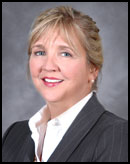
These are really two separate questions, but in both cases, there’s a delicate balance between the end goal and where the market is today.
The intrepid new EHR user is looking to accomplish some basic goals that are meaningful to the physician. Though in many cases these goals overlap with certain meaningful use criteria, we are often looking at something more basic than clinical decision support. Once they have accomplished these goals, the question becomes: “OK, so what else can EHR do for me?” So, from that perspective, the requirement to implement a single rule is a good start and prevents clinical decision support from becoming a workflow distraction rather than an enhancement.
Similarly with interoperability, an incremental, proof-of-concept approach makes sense given that medical communities are typically fragmented and it is rarely the case that a comprehensive HIE exists. Sage has been at the forefront of what has come to be called interoperability, from early lab interfaces, to e-prescribing, to our present ability in Sage Intergy EHR to share a CCD with any entity capable of receiving and consuming it. We’re going to be right there with providers developing and taking advantage of opportunities for meaningful exchange
SRSsoft – Evan Steele, CEO

How much is “enough”? The government wants to achieve a return on the investment it believes it is making in healthcare IT. Having access to massive amounts of clinical data and having the ability to share that data across providers are seen as ways of doing this. But the industry is too far behind the automation curve in terms of infrastructure, networking, and repositories to take that big a step at the outset. By Stage 3, beginning in 2015, the hope is that many of those technologies will have been built out to make decision support and true interoperability viable. The question is: Will providers be willing to accept lower patient volumes and financial penalties to comply over the next 5 years?
For Stage 1, it was clear that CMS wanted to kick-start requirements for clinical decision support—the requirement was increased from implementing one decision rule to five. Not only do physicians have to implement each rule, but they also are required to track their compliance with each rule. How much time and effort will that take? No one can even guess yet. Again, more documentation and reporting will be required. And even if this is done successfully, there is no infrastructure in place to do anything with the data or provide evidence-based guidelines on it.
Interoperability is not within the control of physicians, and existing EHRs do not possess the capability to exchange data electronically, nor is the existing infrastructure of HIEs and registries consistent or sufficient across communities around the country. Interoperability is clearly slated for the future, and will not become even a remote possibility until at least Stage 3.
Important to note: Not one of the hundreds of stakeholders and bureaucrats who have shaped, debated and voted on these guidelines has done anything to vet the realities of EMR deployment up to this point. Specialists and other high-performance physicians have experienced it worst: the high failure rate (there are no cited landmark studies that conclude EMR improves healthcare, reduces risk or decreases costs while there are dozens of studies that conclude the opposite); the low adoption rate achieved up to this point; the unacceptable productivity impact on providers; and poorly designed products that force users to be data-entry clerks as much as physicians. Why is it that this initiative assumes it will suddenly work successfully? Who is concluding that? If this homework isn’t done, this whole program is fraud on the American people. Remember who brought us the $1,200 toilet seats and $800 hammers?












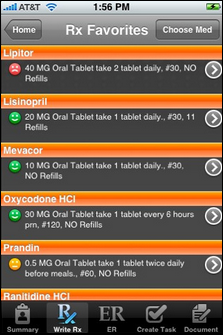




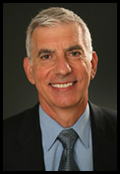
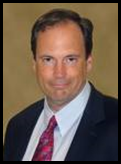

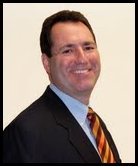
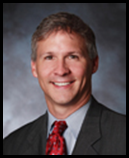

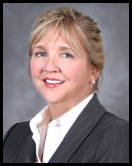

The article about Pediatric Associates in CA has a nugget with a potentially outsized impact: the implication that VFC vaccines…